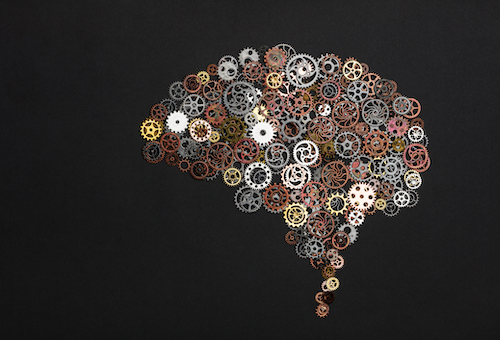Biofeedback and Concussions
A concussion can lead to lasting problems if left untreated or undertreated. When it comes to brain injury, it is vital to gain an understanding of how the brain’s overall function is impacted by the injury.

There are many different options that can address concussion symptoms for patients with different symptoms such as headaches, vertigo, or insomnia. Among them, Biofeedback therapy methods, such as neurofeedback therapy and heart rate variability training (among other options), can be remarkably effective. However, most clinicians are not quite familiar about these options and fail to offer them to their patients.
What is Biofeedback?
Before digging deeper, let’s touch on what biofeedback is and how it differs from neurofeedback. Many people get the two treatment methods confused. Some are unaware that there is even a difference. But the truth is, the terms are not interchangeable. Neurofeedback, or EEG biofeedback, is a subset of biofeedback.
Biofeedback employs medical instruments to gain information, or feedback, about an individual’s physiological activity for the purpose of improved performance and overall health. Biofeedback can be used to treat many medical conditions, including anxiety, hypertension, chronic pain, stress, and more.
Neurofeedback for the Treatment of Concussion Symptoms
Neurofeedback is a specific subset of biofeedback that is research-proven to help improve brainwave activity. Neurofeedback has been shown to be helpful for treating neurological conditions such as traumatic brain injury, sleep disorders, migraines, ADHD, anxiety, stress, and other conditions related to the brain.

After a brain injury, a person’s brain waves can be negatively changed. Neurofeedback enables doctors to determine which brain waves are changed and then provide patients with EEG-based protocols to bring the brain’s rhythm back to normal. Neurofeedback is a painless, simple, and non-invasive way to do just that.

Neurofeedback offers instantaneous information about changes in the brain’s electrical activity. Every half-second, the brain activity is recorded and compared to targets set for change. When your brain meets the targeted goal, you get a signal and a reward. If your brain fails to meet it, you do not.
In one form of neurofeedback, the patient sits in front of a TV screen and watches a movie. Several sensors are placed on the head which records his/her brain activity. This information then is sent to a computer so that these brain waves are compared to results from a normal population. If there is a difference between a patient’s brain waves and optimal brain waves, then the screen fades. This dimming of the screen is the feedback to the patient’s brain that something needs to be done. Then the brain “learns” to improve its activity such that the brain waves are within the normal range. This brain self-correction results in the screen returning to full view. Thus feedback from the patient’s brain leads to adjustments in his/her brain waves; in other words, the brain learns to function in an optimal range.
Neurofeedback can be considered like push-ups for the brain. With every fading of the screen, the brain waves become stronger – and this can happen once every two seconds. This form of brain training includes a lot of repetition (about 30 times every minute), which is proven to be beneficial for the reshaping of the brain. In just 20 neurofeedback sessions, your brain gets 72,000 chances to learn! This allows your brain to reshape networks after a concussion or traumatic brain injury.
Research has proven the effectiveness of biofeedback in treating concussion symptoms in individuals with mild traumatic brain injury. For example, one medical report noted the results of a 17-year old female athlete who experienced two consecutive concussions with headache symptoms. She was given twenty-two sessions of EEG-guided neurofeedback, which produced normalization of her EEG profile and her headaches went away. After a second concussion, she was given the same treatment, and her brain activity was again normalized and symptoms dissipated.
Heart Rate Variability Biofeedback
Heart Rate Variability (HRV) is another form of biofeedback that includes measuring the body’s response after brain injury. Heart Rate Variability is essentially a measure of the variations in heart rate between beats followed by slow breathing to correct any apparent abnormalities.

HRV biofeedback can help in the detection of concussions, the monitoring of recovery, and setting targets for treatment. Concussions can lead to a dysregulation of the autonomic nervous system (ANS), which leads to changes in HRV.
During an HRV biofeedback session, beat-by-beat heart rate data is measured during slow breathing so the breathing can begin to optimize the heart rate patterns. A biofeedback device displays on a computer monitor when the patient has maximized the interaction, which has an activation effect on the nervous system. It is also very calming for the nervous system.
It has been found that HRV is an important mechanism that can help to increase the communication between the cardiac system and the nervous systems, which is promising for those suffering from concussion symptoms.

One study reported that alterations in HRV were present in patients with mild TBI or concussion. A decrease in HRV was common in patients with all levels of brain injury severity, as well as disruption in cardiovascular activity. HRV biofeedback training can help symptoms related to post-concussion syndrome to improve by improving autonomic balance and cerebral autoregulation, helping the brain and body to heal.
Learn more about Neurofeedback and its benefits.
This blog was written by Mrs. Courtney Cosby and edited by Dr. Majid Fotuhi.



